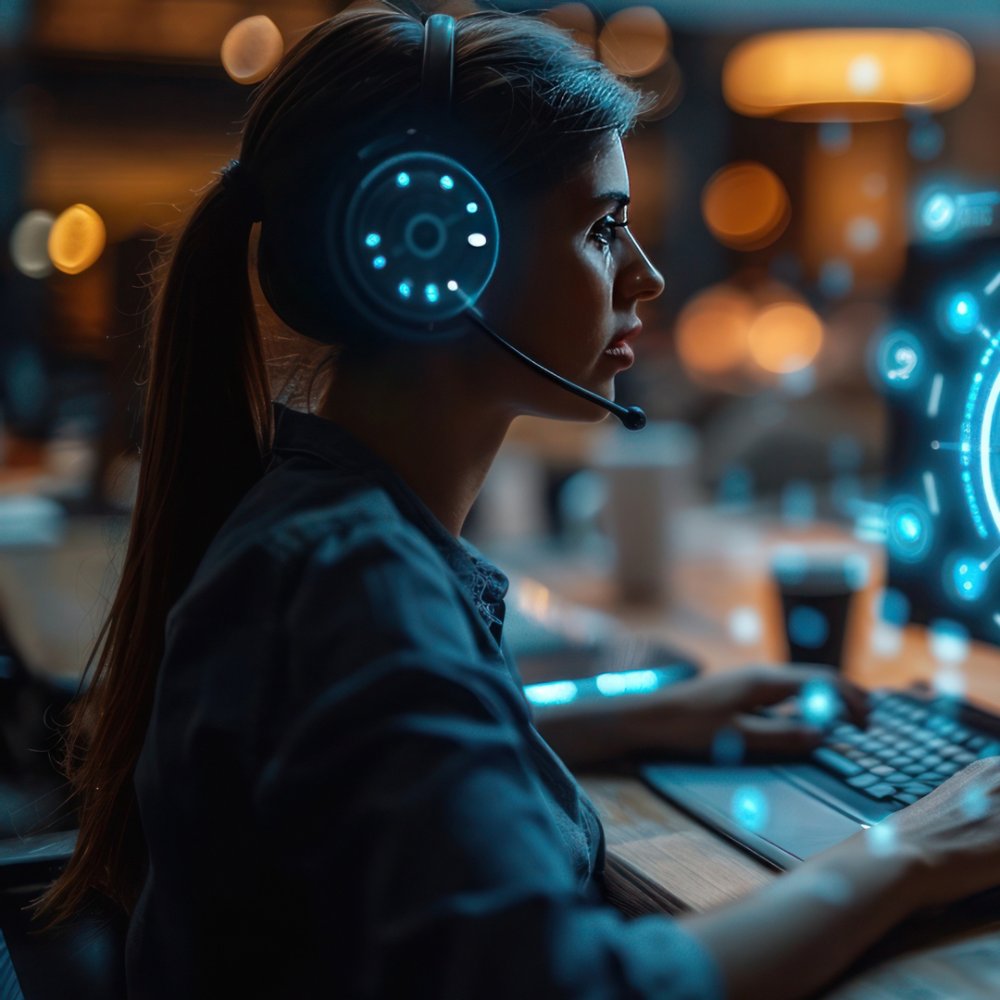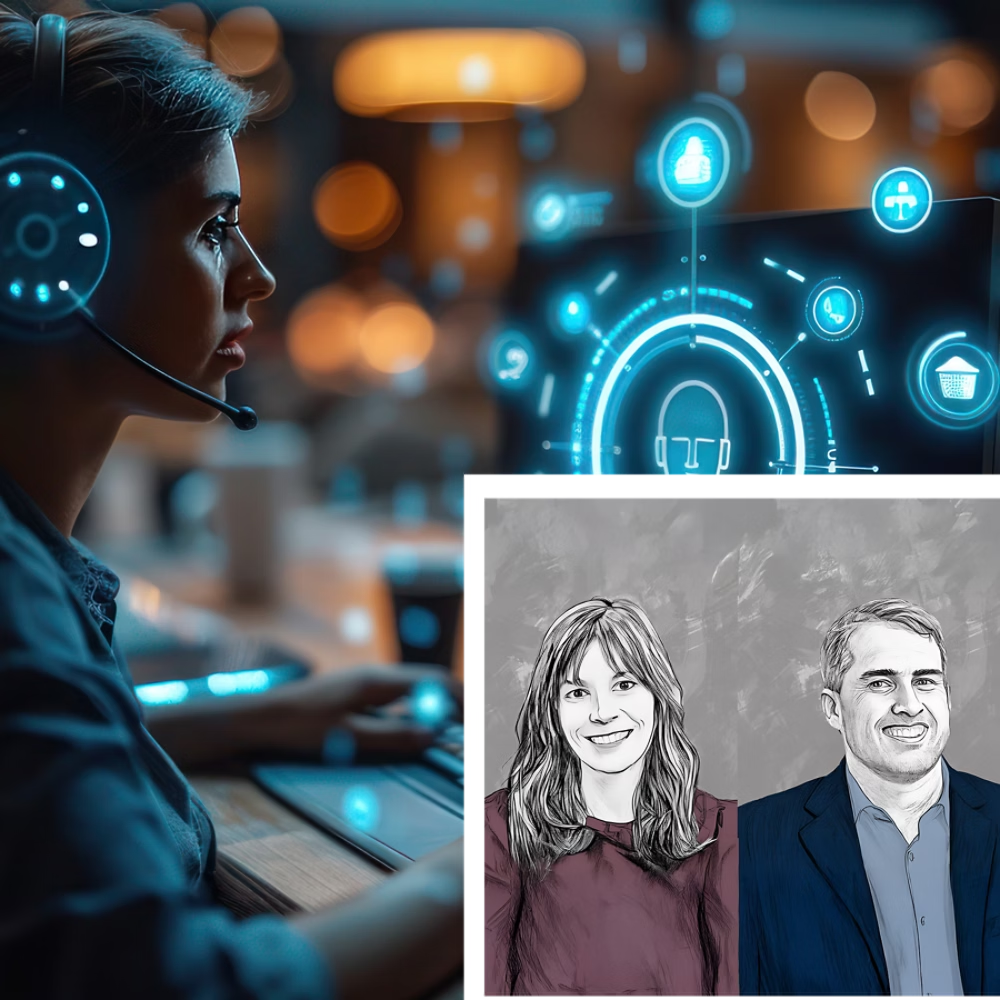The drumbeat of disruption is getting louder, faster, and more relentless.
Every two years, we at Reinvention Academy conduct "speed of change" research with our clients and community. In 2018, in a survey of more than 2,000 managers, 47% reported that in order to survive, they needed to reinvent their businesses every three years or less. In 2020, amidst the pandemic, that number jumped to 60%.
This accelerating pace of disruption demands something most organizations haven't mastered: the capacity for continuous reinvention. And here's where AI presents an unexpected opportunity—not just as another technological challenge to survive, but as the perfect training ground for building the reinvention muscle your organization desperately needs.
But here's the twist: the key to successful AI adoption isn't about maximizing efficiency or automating everything in sight. It's about fundamentally reimagining the employee experience in ways that most leaders haven't considered.
The great AI disconnect
Currently, there's a profound disconnect happening in organizations rolling out AI initiatives. In our work with companies across industries, we consistently observe the same pattern: executives push AI as a speed and efficiency tool, while employees are drowning in an already overwhelming pace of change.
This mismatch reveals a fundamental misunderstanding about what employees actually need from AI. While leadership focuses on productivity metrics and cost savings, employees are experiencing something entirely different—they're looking for relief, not acceleration. Indeed, the numbers tell a sobering story. Gallup's 2025 State of the Global Workplace report shows that employee disengagement has reached crisis levels, with 79% of employees either disengaged or in active sabotage mode. This isn't just about productivity—it's about human capacity being pushed beyond sustainable limits.
The traditional approach treats AI as an efficiency engine: How can we do more, faster, cheaper? But this perspective misses the transformative potential of AI as what we call an "energy tool" — technology that doesn't just boost productivity but actually reduces stress, creates breathing room, and gives employees back their cognitive and emotional bandwidth.

Flipping the AI script
The most successful AI implementations we've observed share a common characteristic: they start with employee wellbeing, not business metrics. Instead of asking "How can AI make us more efficient?", the better question is "How can AI make work more human?"
This shift in perspective transforms everything about how you introduce and scale AI in your organization. Rather than imposing AI solutions from the top down, you create space for employees to discover how AI can solve their most draining, repetitive, or cognitively exhausting tasks.
Consider this reframe: AI isn't about replacing human capabilities—it's about amplifying human energy and focus for work that truly matters. When employees see AI as a tool that removes friction rather than adds pressure, adoption accelerates and innovation flourishes.
The health challenge approach
One of the most effective ways we've seen organizations introduce AI is through what we call the "health challenge approach." This strategy has deep roots in organizational change management.
Around 2005, when Walmart was rolling out its new sustainability strategy, adoption was remarkably low. Managers perceived it as yet another task on an already overwhelming list. So Walmart pivoted: instead of pushing corporate sustainability initiatives, they launched a campaign focused on personal sustainability and resilience. Employee engagement skyrocketed.
We've adapted this insight for AI adoption at Reinvention Academy. Whenever we run workshops on AI, we never start with business use cases—those tend to create the most resistance. Instead, we showcase AI capabilities by asking each participant to choose a personal health challenge, whether that's improving sleep quality, managing stress, or building better nutrition habits. This dramatically increases engagement.
Here's how it works:
An employee trying to improve their sleep might use AI to analyze their schedule and suggest optimal bedtimes, track environmental factors affecting sleep quality, or even generate personalized wind-down routines. Someone focused on nutrition could leverage AI for meal planning, ingredient substitution, or understanding complex nutritional information.
This approach works because it's immediately relevant and personally meaningful. Employees see tangible benefits in their own lives before being asked to apply AI to work challenges. They develop comfort with AI interfaces, understand prompt engineering, and experience firsthand how AI can augment rather than replace human judgment — all while working on something they genuinely care about.
The psychological safety this creates is invaluable. When employees first encounter AI in a low-stakes, personally beneficial context, they're more likely to approach workplace AI applications with curiosity rather than fear.
Targeting the energy drains
The second strategy focuses on what we call "energy drain mapping"—systematically identifying the tasks that most deplete employee energy and motivation, then using AI to eliminate or transform those tasks.
These aren't necessarily the most time-consuming activities. Often, the biggest energy drains are small, repetitive tasks that interrupt flow states: formatting reports, scheduling across time zones, searching for information in disparate systems, or translating technical jargon for different audiences.
One manufacturing company we worked with discovered that their engineers spent enormous mental energy not on complex problem-solving, but on writing status updates in formats their non-technical colleagues could understand. A simple AI translation tool that converted technical language into business language freed up cognitive bandwidth for actual engineering challenges.
The key insight: employees will embrace AI most readily when it eliminates tasks that feel mechanical, repetitive, or cognitively draining—the work that makes them feel like machines rather than humans.
AI as a civility coach
There's another energy drain that rarely appears on productivity dashboards but costs organizations staggering amounts: workplace incivility. According to the Society for Human Resource Management’s Civility Index, U.S. organizations collectively lose roughly $2 billion per day due to uncivil behavior—$1.2 billion in reduced productivity and $828 million in absenteeism.
The personal toll is equally significant. Workers who experienced or witnessed incivility reported an average productivity loss of 31 minutes per occurrence. Even more telling, employees intentionally stayed away from work an average of 0.61 days per month to avoid incivility, with those who directly experienced it taking an average of 1.5 days away.
This creates a perfect opportunity for AI to improve employee experience in an unexpected way: as a civility coach.
Many employees struggle with workplace communication, not because they lack goodwill, but because they're stressed, rushed, or unsure how their message will land across different cultural contexts or communication styles. AI can serve as a real-time communication assistant, helping employees craft emails, Slack messages, and other written communications that are clear, respectful, and constructive.
An employee drafting a difficult email can ask AI to review the tone, suggest more collaborative language, or identify phrases that might be misinterpreted. Someone responding under time pressure can use AI to ensure their message doesn't come across as curt or dismissive. Workers navigating cross-cultural communication can get guidance on how their message might be received in different contexts.
This isn't about sanitizing communication or creating corporate-speak. It's about giving employees a tool to align their intent with their impact — especially in moments when stress, fatigue, or urgency might compromise their natural communication skills.
The beauty of this approach is that it addresses a genuine pain point while teaching valuable AI collaboration skills. Employees discover that AI can serve as a thoughtful partner in navigating interpersonal complexity, not just a tool for technical tasks. And organizations see measurable improvements in both workplace culture and the bottom line.
Building continuous reinvention capacity
Here's where the broader strategic value emerges. By introducing AI through employee experience improvements, you're actually building something far more valuable than AI adoption: you're developing your organization's capacity for continuous reinvention.
Every successful AI implementation teaches employees three critical reinvention skills:
Comfort with uncertainty: Working with AI requires tolerance for ambiguity and iterative improvement. These are exactly the skills needed for navigating any form of organizational change.
Experimentation mindset: Finding the right AI applications requires testing, learning, and adapting. This experimental approach becomes invaluable for any reinvention effort.
Human-technology collaboration: Learning to work effectively with AI develops the broader skill of adapting to new tools and processes—essential for thriving in continuous change.
Beyond individual benefits: system-level impact
When AI implementations start with employee experience, the benefits compound throughout the organization. Teams that are less stressed and more energized are naturally more resilient and adaptable. They're better equipped to handle the next wave of disruption, whether it's regulatory changes, supply chain shifts, or competitive pressures.
This creates what we call a "reinvention flywheel." Each successful adaptation builds confidence and capability for the next change. AI becomes the catalyst for organizational learning that extends far beyond technology adoption.
Practical next steps
Start Small and Personal: Launch AI initiatives with personal relevance—health challenges, learning goals, or individual productivity pain points.
Map Energy Drains: Conduct honest assessments of which tasks deplete rather than energize your employees. Target these with AI solutions first.
Create Learning Communities: Establish forums where employees can share AI discoveries and applications. Peer learning accelerates adoption more effectively than top-down training.
Measure Energy, Not Just Efficiency: Track employee satisfaction, stress levels, and energy alongside traditional productivity metrics.
Build on Success: Use early AI wins to demonstrate the possibility of positive change, then apply those lessons to larger organizational challenges.
The real AI advantage
The organizations that will thrive in our era of constant disruption aren't necessarily those with the most sophisticated AI systems. They're the ones that use AI adoption as an opportunity to fundamentally improve how employees experience work.
The stakes are enormous. According to Gallup, employee engagement fell by two percentage points in 2024, costing the world economy an estimated $438 billion in lost productivity. This isn't just a people problem — it's an existential business challenge.
This approach delivers a double advantage: better AI outcomes and stronger organizational resilience. Employees who see technology as an ally in managing complexity rather than a source of additional pressure become natural champions of change.
The traditional narrative positions AI as a threat to jobs or a tool for extracting more productivity from workers. The alternative narrative — AI as a pathway to more humane, energizing work — creates entirely different outcomes.
The question isn't whether your organization will need to continuously reinvent itself—that's already decided. The question is whether you'll use AI as a tool for human flourishing or simply as another source of pressure in an already overwhelming world.
Choose wisely. Your employees' energy and your organization's future adaptability depend on it.
Have questions or want to learn more?






